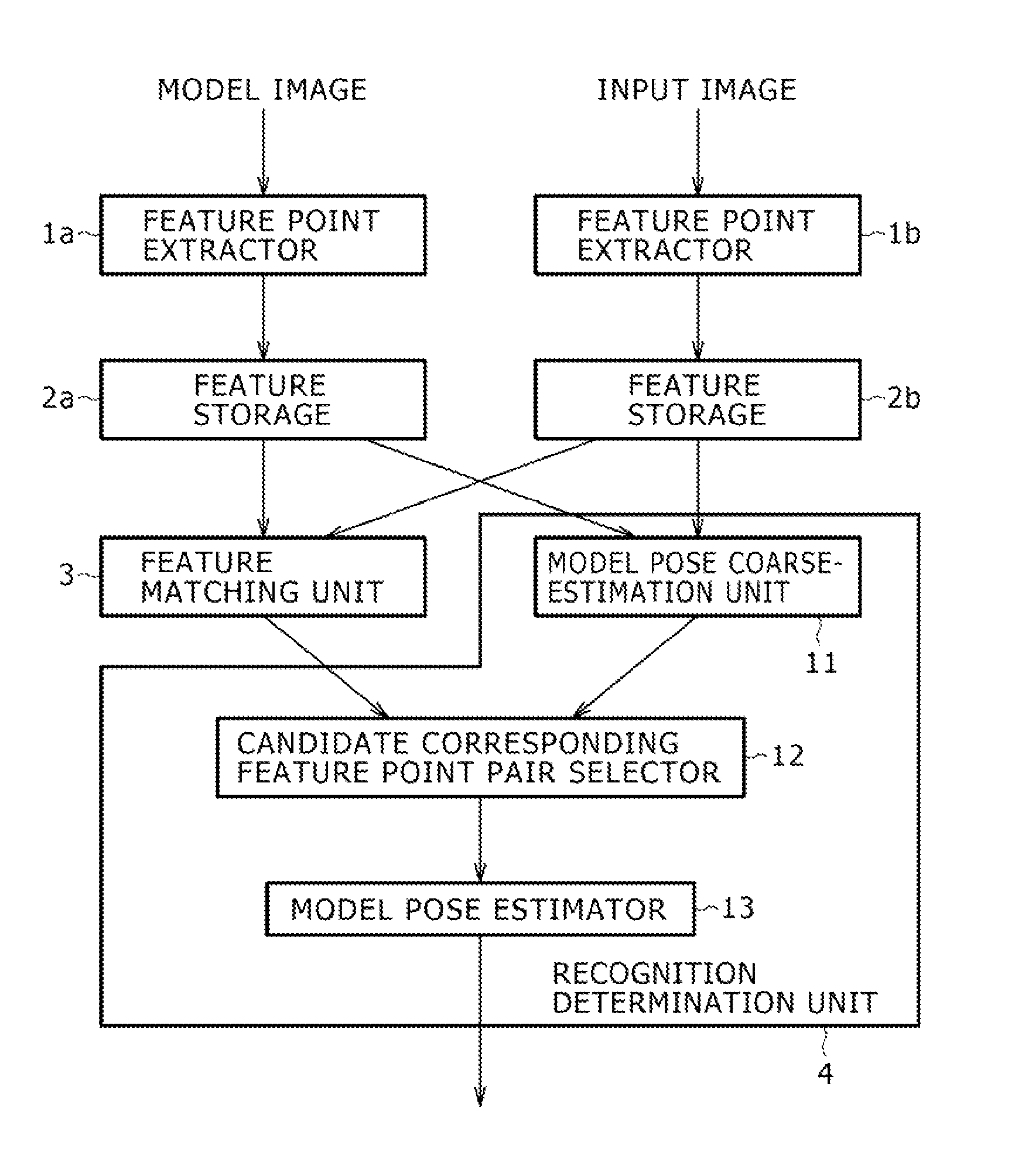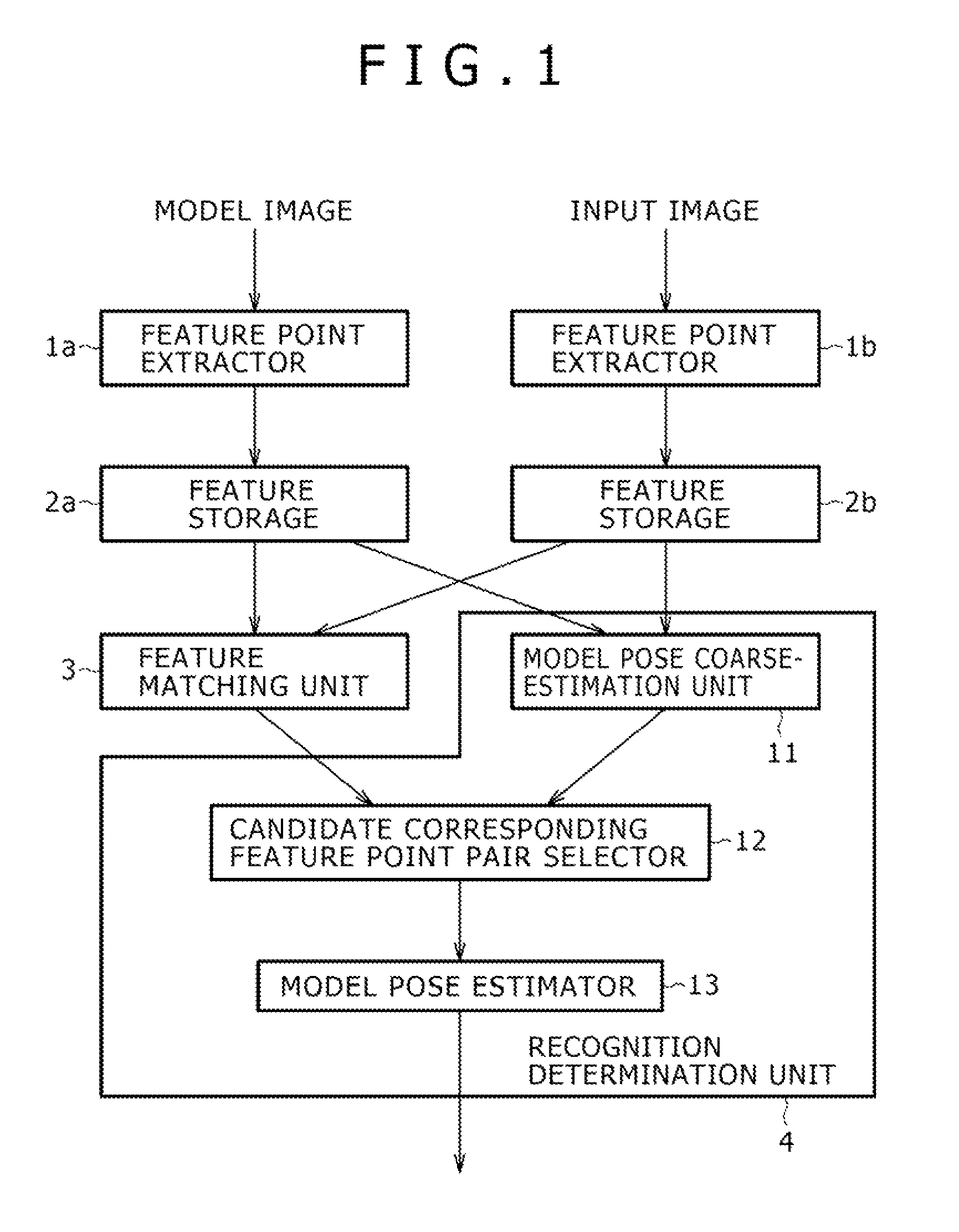Information processing device, information processing method, and program
a technology of information processing and information processing method, applied in character and pattern recognition, instruments, computing, etc., can solve the problems of inability to stabilize the extraction of canonical orientations, the effect of significantly adverse effects of improper canonical orientations on the result of feature matching, and the inability to detect an object. stable and stable detection of objects
- Summary
- Abstract
- Description
- Claims
- Application Information
AI Technical Summary
Benefits of technology
Problems solved by technology
Method used
Image
Examples
Embodiment Construction
[0051]An embodiment of the present invention will be described below. Prior to the description of the embodiment, the correspondence relationships between the configuration elements set forth in the claims and specific examples in the specification or a drawing will be exemplified. This exemplification is to confirm that specific examples for supporting the invention set forth in the claims are described in the specification or a drawing. Therefore, even when there is a specific example that is not shown in the exemplification as an entity corresponding to a configuration element although it is described in the specification or a drawing, this does not mean that this specific example does not correspond to the configuration element. On the other hand, although specific examples are shown in the exemplification as an entity corresponding to a configuration element, this does not mean that these specific examples do not correspond to a configuration element other than the configuratio...
PUM
 Login to View More
Login to View More Abstract
Description
Claims
Application Information
 Login to View More
Login to View More - R&D
- Intellectual Property
- Life Sciences
- Materials
- Tech Scout
- Unparalleled Data Quality
- Higher Quality Content
- 60% Fewer Hallucinations
Browse by: Latest US Patents, China's latest patents, Technical Efficacy Thesaurus, Application Domain, Technology Topic, Popular Technical Reports.
© 2025 PatSnap. All rights reserved.Legal|Privacy policy|Modern Slavery Act Transparency Statement|Sitemap|About US| Contact US: help@patsnap.com



